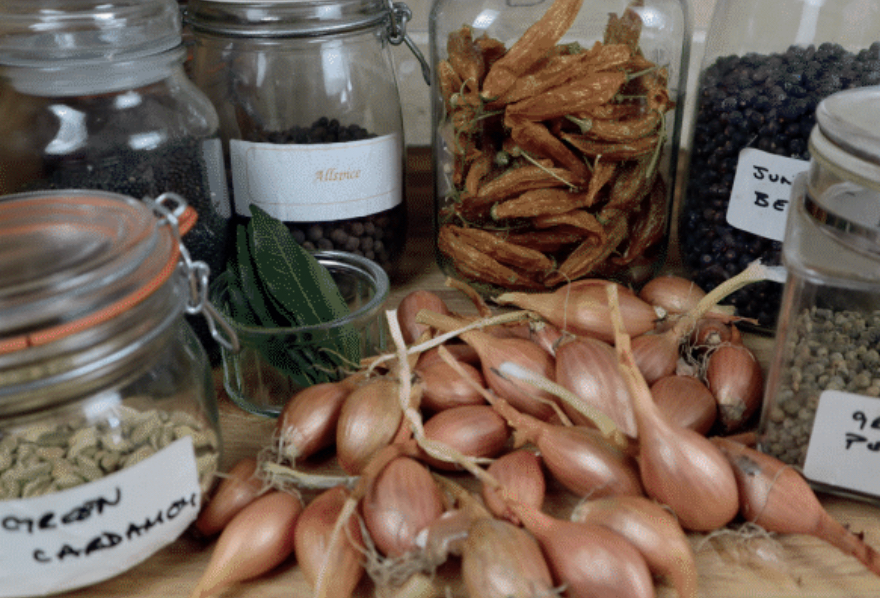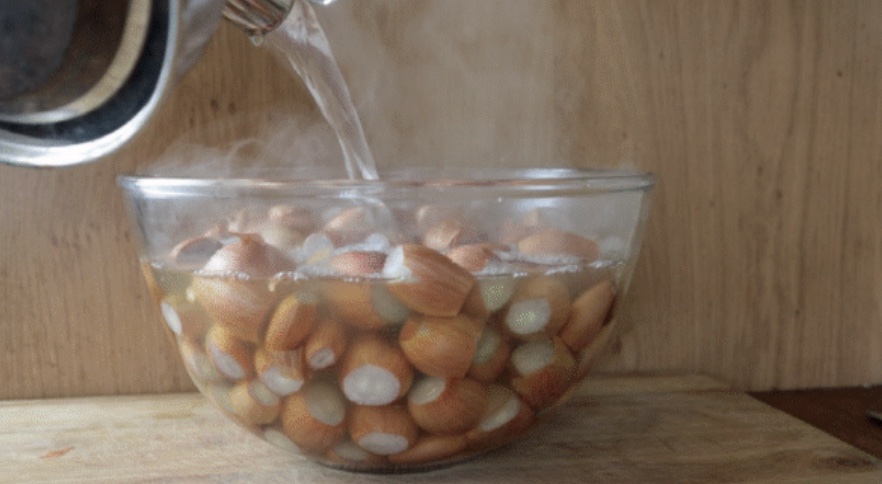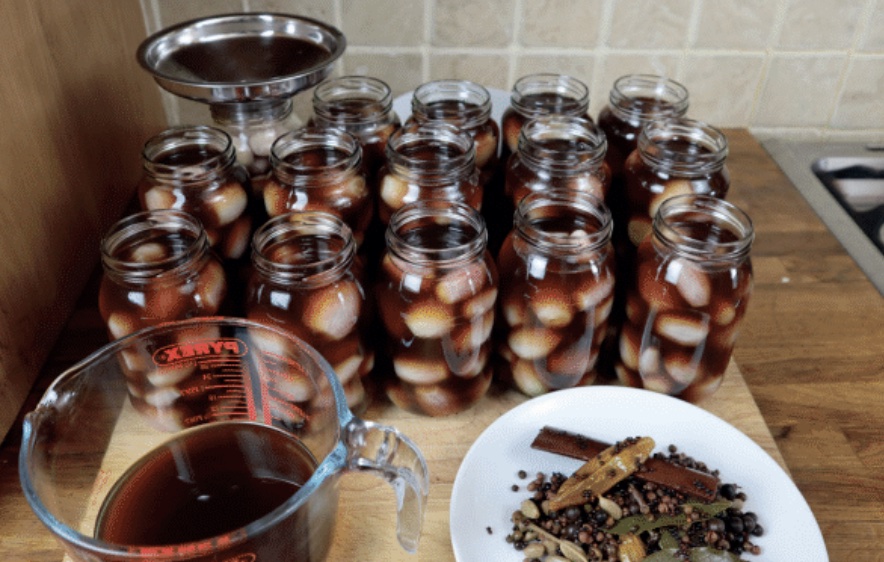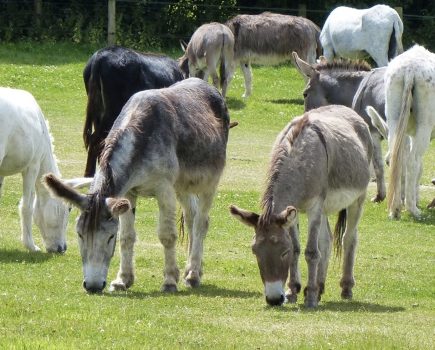Smallholders Fiona and Hugh Osborne reveal their top tips to make what they consider to be the ‘perfect’ pickled onions…
When we started growing our own food, we wanted to achieve several things, wonderful flavours, long preserving time and crops that didn’t require us to constantly spend money on seeds. If someone is looking for a perfect example of a self-sufficient crop that is wildly under-appreciated, it has to be the humble shallot. When we grow shallots, we plant one and get 8 to 10 back. We save the biggest and the best, replant in another bed and the circle repeats. The bulbs that we use keep far longer than any onion variety that we have ever tried. If we harvest in the Autumn and store them cool, dark and dry, they will last well into the following Summer.
We find the flavour of shallots is much more mellow than onions and they work brilliantly in stir fries and many oriental dishes.

As many uses as there are for shallots, a really first-rate pickled onion has to rank amongst the best (pickled onions aren’t really onions, they’re normally shallots).
Pickled onions evoke memories of Hugh’s long-gone grandfather at Christmas who loved a supper of strong cheddar, crackers and home-made pickled onions. For over a quarter of a century, we have been growing shallots and making pickled onions and are now really proud of our recipe. We think it makes an incredible pickled onion, crisp, fragrant and full of subtle flavours. Now is the time to make them; whether you harvest your own shallots or buy them in the shops. They will be perfect by Christmas.
PREPARING YOUR SHALLOTS
When we preserve, we tend to preserve a LOT of them, it’s simply more time efficient for us, so this recipe calls for 5 kilos of pickled onions. Whilst that may sound a huge amount, they last for several years and indeed improve for keeping! However, if 5 kilos seems a daunting amount it’s easy enough to scale the recipe back to make just a kilo.The first thing to do is to peel your shallots. It’s definitely worth having something good on the radio when doing this as it does require patience. We “top and tail” each shallot with a sharp knife (cutting off the top growth and roots). Then we put the shallots in a bowl and when the bowl is full, cover the shallots in boiling water, leaving them to steep for five minutes. We drain the shallots and, with a firm pinch between finger and thumb, they just slip out of their skins.
If you are in search of the perfect pickled onion, one of the key attributes is that it must be crisp. To make them crisp we need to get a lot of the moisture out of the shallot. We do this by ‘brining’ the shallots.
Take 5 litres of cold water and add 500g of table salt, then stir until dissolved (there’s no need to heat the water). Drop your peeled shallots into the brine and leave them for 24 hours. The brine will draw a lot of moisture out of the shallots leaving them deliciously crunchy.
SPICING THE VINEGAR
Getting the best tasting and looking vinegar for a pickled onion is where the secrets lie. We make our own cider and wine vinegars and have tried using them. We’ve even tried making sweet, pickled onions with balsamic vinegar. After numerous experiments over many years, we have concluded that nothing beats malt vinegar. Do be sure to get something that is labelled “malt vinegar” though as some things that look like malt vinegar are actually NBC (Non-Brewed Condiment).
NBC is acetic acid, water and something like caramel for colour and it really does NOT taste as good as real malt vinegar.The next step in making a great pickled onion is to infuse the vinegar with pickling spice.You can buy commercial, pre-mixed pickling spice (or even just use simple malt vinegar) but we find that using our own mix gives a unique, fragrant, and delicious taste.
To make our spiced vinegar we combine 4 litres of malt vinegar in a large pan with the spices. We only ever use whole spices. Ground spices can’t be fully filtered out and make the vinegar look muddy. This doesn’t really damage the flavour, but it looks horrible! With the ingredients combined we cover the pan, bring the vinegar to the boil and then immediately turn off the heat. We leave the vinegar to infuse for 24 hours. You might want to do this outside or with windows open – boiling vinegar in spices is very pungent, although Hugh thinks the smell is better than any air freshener.

Putting shallots in boiling water makes peeling much easier
PICKLING THE SHALLOTS
Once 24 hours have passed, we drain the shallots and rinse them well in a colander to wash off any salt. We then strain the spiced vinegar off the whole spices through a fine sieve and again through some muslin to get rid of any small particles and leave the vinegar beautifully clear. Some people like to put some of the pickling spice into the jars but as they aren’t edible and are a good way to crack a tooth, the only real reason to do this is aesthetics. Finally, we pack the shallots into clean jars up to the neck and then pour over the spiced vinegar, completely covering the shallots and then sealing the jar with a new lid. Leave the jar for at least a month so that the shallots absorb all the delicate flavours of the vinegar, we find them absolutely perfect by. Christmas. If you use our spice mix you will find a complex and delicate flavour full of interesting aromatic notes. We’ve tried just using chillies or plain malt vinegar but, like a good curry or sauce we have discovered that using a range of complimentary spices creates a complex and interesting taste.While these are great with a hunk of strong cheddar, they are also delicious finely sliced in sandwiches or chopped in to a salad. They are a winter staple in our home and we hope that you enjoy them too.
INGREDIENTS
For the onions
5 Kilos of shallots
500g of salt
5L Water
For the spiced vinegar
4L of malt vinegar
2tbs black mustard seed
1tbs whole allspice berries
2tbs green cardamom
10 whole cloves
10 whole dried chillies
1tbs green peppercorns
2 tbs Szechuan peppercorns
1 tbs juniper berries
5 bay leaves
1 stick of cinnamon
See more from Hugh and Fiona at: www.youtube.com/c/EnglishCountryLife
This article originally appeared in the September 2023 issue of The Country Smallholder magazine. To receive regular copies of The Country Smallholder magazine featuring more articles like this, subscribe here.
For FREE updates from the world of smallholding, sign up for The Country Smallholder newsletter here.








